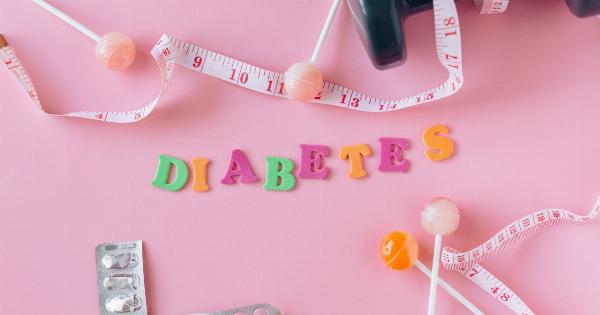Strokes are a major cause of disability and death worldwide. They occur when the blood supply to the brain is disrupted, either due to a blockage in a blood vessel or when a blood vessel bursts.
While strokes are often associated with older age, research shows that the incidence of strokes among younger individuals is on the rise. In fact, strokes among people under 50 have been steadily increasing, making it essential for individuals of all ages to take steps to prevent this life-threatening condition.
The Alarming Rise in Strokes Among Younger Individuals
Traditionally, strokes have been seen as something that primarily afflicts older adults. However, recent studies have revealed a worrying trend – an increase in strokes among younger individuals.
According to research published in the Journal of the American Heart Association, there has been a 44% increase in the rate of stroke hospitalizations in individuals aged 25 to 44 over the past decade. This rise in strokes among the younger population is attributed to several factors, including sedentary lifestyles, poor diet, obesity, and an increase in risk factors such as diabetes and hypertension at a younger age.
The Importance of Physical Activity
Regular physical activity has been proven to be one of the most effective ways to prevent strokes and maintain overall cardiovascular health.
Engaging in exercise increases blood flow, strengthens the heart, and helps reduce blood pressure and cholesterol levels. Furthermore, physical activity plays a crucial role in weight management, which is another key factor in stroke prevention.
By maintaining a healthy weight, individuals can significantly reduce their risk of developing obesity-related conditions, such as diabetes and hypertension, that often contribute to stroke occurrence.
The Key Movement: High-Intensity Interval Training (HIIT)
While any form of physical activity can be beneficial, there is one particular type of exercise that has gained immense popularity in recent years for its potential impact on stroke prevention – High-Intensity Interval Training (HIIT).
HIIT involves alternating high-intensity exercises with short recovery periods, challenging the body and maximizing cardiovascular benefits in a short amount of time.
A study published in the American Journal of Physical Medicine & Rehabilitation found that HIIT sessions as short as 20 minutes, three times a week, can significantly improve cardiovascular function and reduce the risk of stroke.
The intensity of HIIT stimulates the production of nitric oxide, a chemical that dilates blood vessels, lowers blood pressure, and enhances blood flow to the brain. This increased blood flow nourishes brain cells, reduces the risk of clots, and improves overall brain health, reducing the likelihood of a stroke.
Other Benefits of High-Intensity Interval Training (HIIT)
While stroke prevention is a crucial benefit of HIIT, this form of exercise offers numerous other advantages for both physical and mental health:.
1. Efficient Time Use
HIIT workouts are known for their short duration but high impact. This makes them ideal for individuals with limited time to spare, allowing them to maximize their exercise benefits in a shorter period.
2. Increased Metabolism
HIIT has been shown to boost metabolism and increase fat burning both during and after the workout. This is particularly beneficial for individuals aiming to lose weight or maintain a healthy body composition.
3. Improved Athletic Performance
HIIT helps improve stamina, endurance, and overall athleticism. It can enhance speed, power, and agility, making it suitable for athletes and individuals engaged in sports activities.
4. Enhanced Mental Well-being
Engaging in HIIT releases endorphins, commonly known as “feel-good” hormones, which can boost mood, reduce stress, and alleviate symptoms of anxiety and depression.
5. Increased Muscle Tone
HIIT exercises engage multiple muscle groups simultaneously, resulting in improved muscle tone and strength. This form of training is highly effective in building lean muscle mass.
How to Incorporate High-Intensity Interval Training (HIIT) into Your Routine
Getting started with HIIT does not require expensive equipment or a gym membership. Here’s how you can incorporate HIIT into your daily routine:.
1. Choose Your Exercises
Select exercises that target different muscle groups and elevate your heart rate. Examples include jumping jacks, burpees, high knees, mountain climbers, and squat jumps.
2. Determine the Intensity and Duration
Perform each exercise at maximum effort for 30 to 60 seconds, followed by a 10 to 20-second recovery period. Repeat the circuit for 15 to 20 minutes, aiming for three to four sessions per week.
3. Warm Up and Cool Down
Before beginning the HIIT workout, engage in a 5- to 10-minute warm-up, such as light jogging or stretching. After completing the circuit, cool down with light stretching exercises to prevent muscle soreness and injury.
4. Listen to Your Body
Start slowly and gradually increase the intensity and duration of your workouts over time. If you have any existing health conditions or concerns, consult with a healthcare professional before beginning any new exercise program.
Conclusion
Strokes can have devastating consequences, and their incidence among younger individuals is becoming alarmingly common.
However, by prioritizing physical activity and incorporating High-Intensity Interval Training (HIIT) into our routines, we can significantly reduce the risk of experiencing a stroke before the age of 50. Whether it’s for stroke prevention, weight management, or overall cardiovascular health, HIIT offers numerous benefits that make it an excellent choice for individuals of all ages and fitness levels.
So, lace up your sneakers, set aside a few minutes each day, and embark on this key movement that could save you from the life-threatening effects of a stroke.































